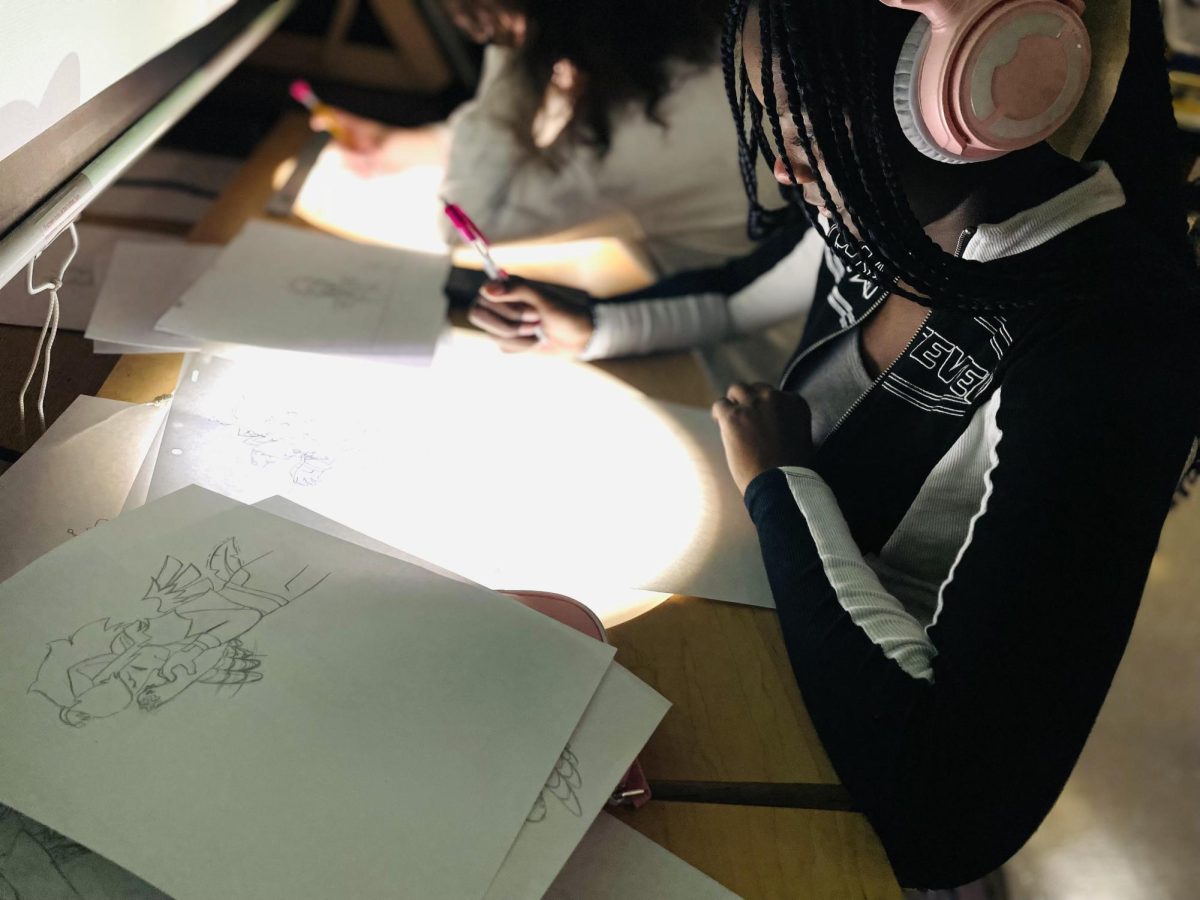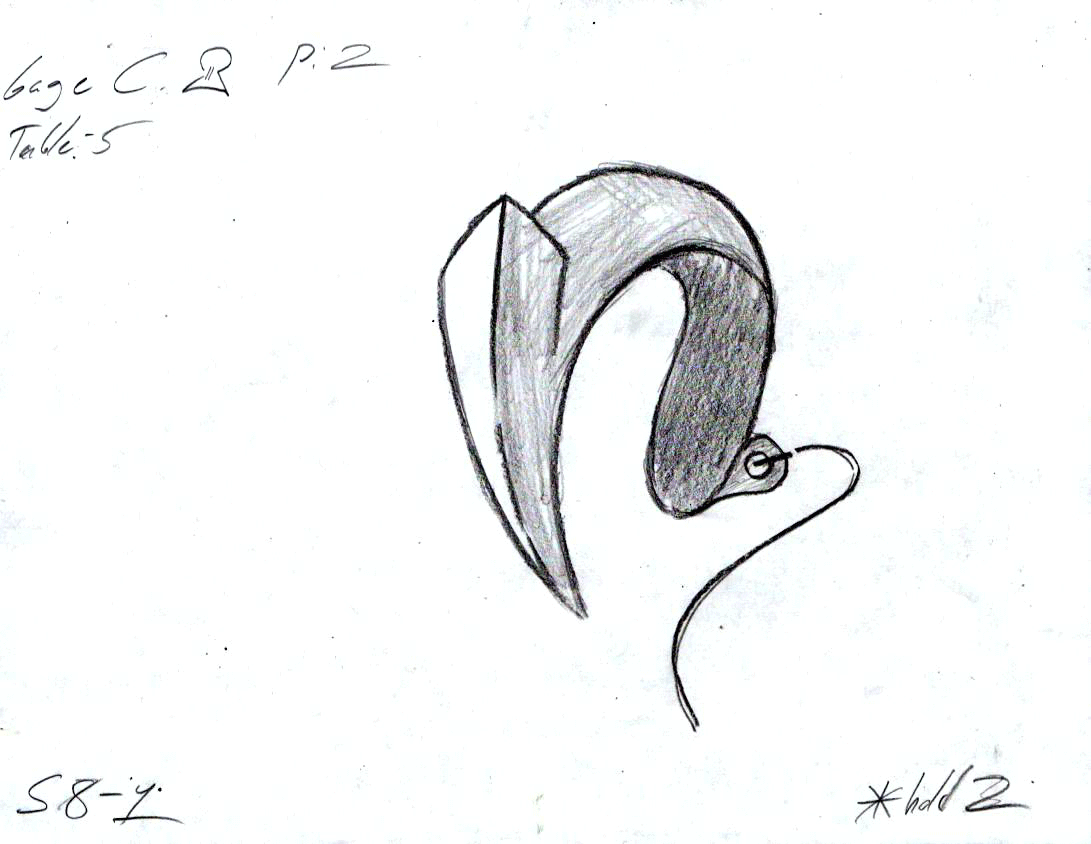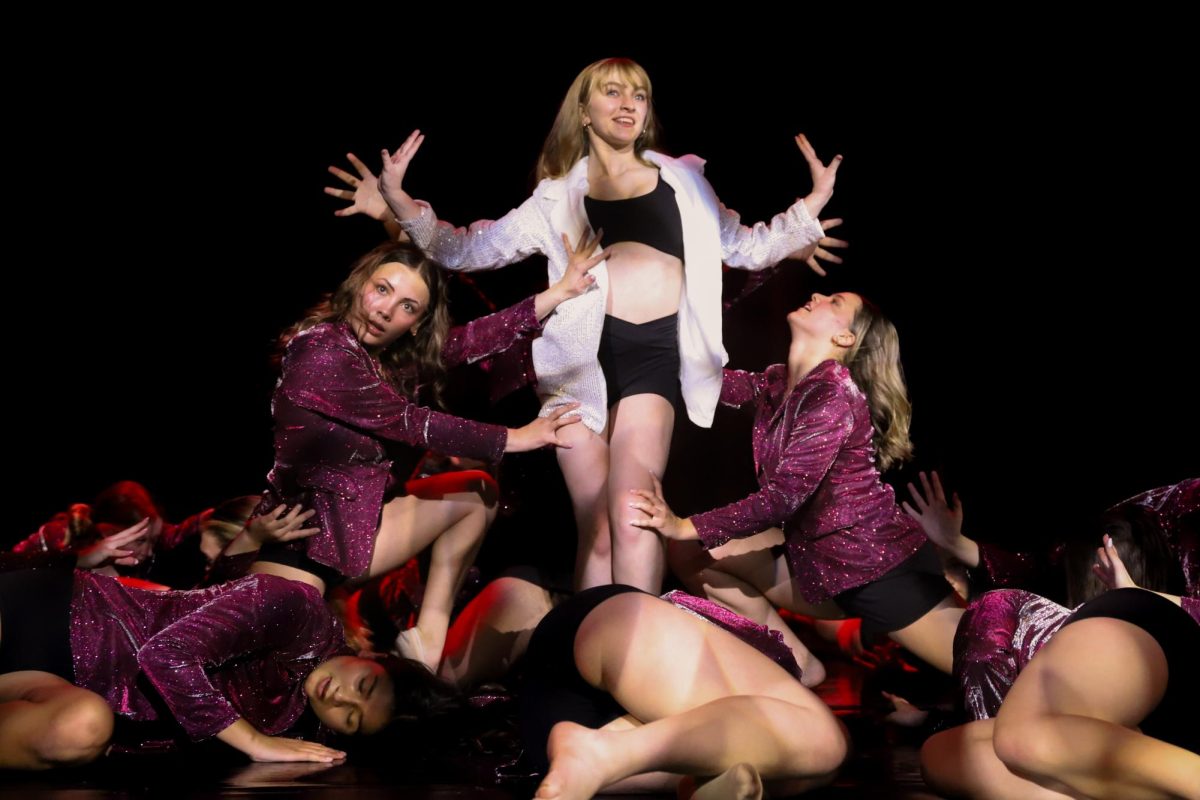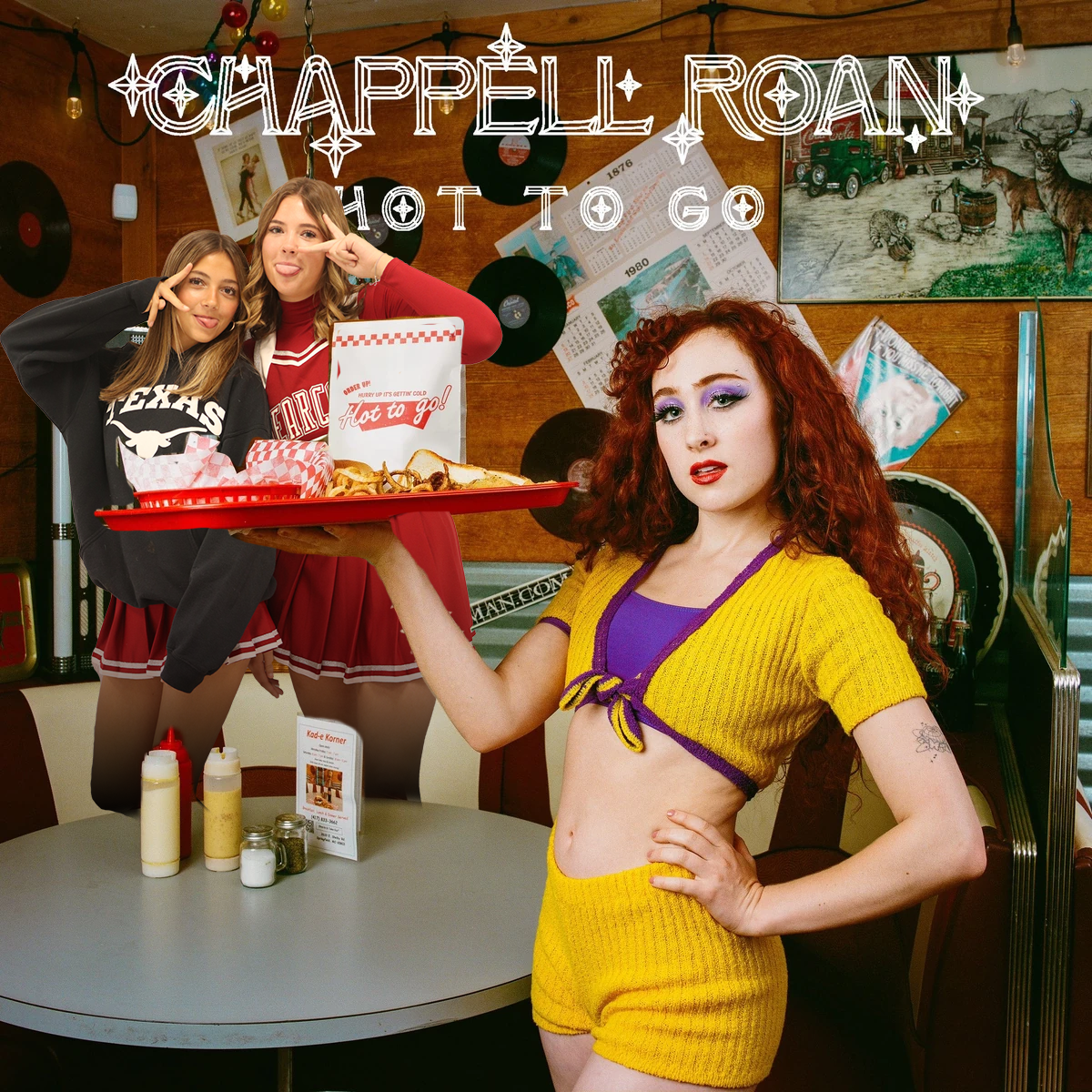From the beginning of 2023, animation started out in room 506 with a whopping two classes! Animation has been two periods since 2023, and is still proving to be successful, with period one having 36, and period two having 29. Students work together to create studio behavior, meaning that they dedicate room 506 to working on their animations. Busily sketching, and booting up the scanners, the group is always moving.
This class, led by the unequaled Taylor Brooks, teaches students to draw, storyboard, and create animations by hand. In addition to the classic hand animation style, students also make their own sound effects, creating their own short films or scenes.
Students also appreciate the structure, as well as the creative freedom this class gives them. Second year animation student and sophomore Amber Malik remarks on animation’s positives.
“I like making my own stories, and being creative with them,” said Malik. “The biggest difference about this art class is that we have creative freedom.”
Malik strives to have a future in art, and believes that animation will help pave the way to that goal.
Animation is unique, compared to its art counterparts based on its use of creative and analytical thinking. Sarah Zavala, a senior and a second year animator expressed her enjoyment of animation.
“Animation shows you how to do better and learn from your mistakes, it’s very critical thinking for an art class.” Zavala has made over 20 pencil tests, 3 animations, and leads projects. “Pencil tests helped me make adjustments to my work. They also show me how I can do better.” She believes that animation is very fulfilling.
She mentions,“I want to be an art teacher for elementary school. ” Animation is helping me think more creatively.”
Brooks, the teacher leading animation, remarks that “Animation is a tried and true industry. This class is unique because it is traditional. Everything is done on paper, the old-school way. Most animation classes are computer based. Richard Williams, Animation Director on Who Framed Roger Rabbit, says that everyone that wants to do animation should learn to animate on paper first.” And so, animation students do this, creating hundreds of sketches to make their stories come to fruition.
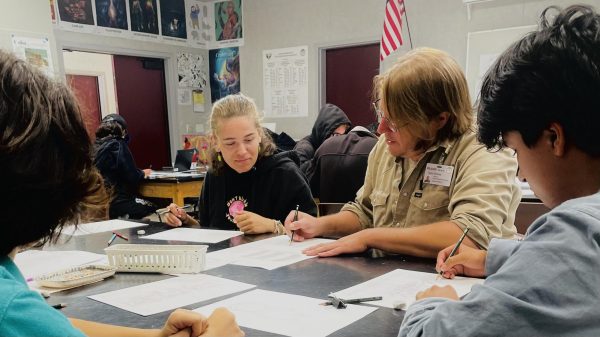
Brooks remarks on the unique aspects, saying “Animation is quite different because we don’t just make still pictures. We make hundreds of still pictures, then lay them together and make them move. Animation is the art of bringing still pictures to life. The aesthetic quality of the work does remain the same, however.” The workload is also quite large, however, students are dedicated to making their projects look right. He says, “Animation takes a lot of work. Sometimes an animator might be spending hours making hundreds of drawings.” Students will make about 720 frames for one animation.
“You see, in animation we are making drawings come to life. When drawing them, we can flip through the pages and see it move, but nothing compares to the pencil test. “When we check the work, it doesn’t lie. So yes, it is a lot of work, but with great reward.

You can be sure to look forward to new animation classes! Brooks also wants to create an art pathway for students who want to continue in animation. Colors of Animation will focus around how colors affect tone and mood. The second, Productions of Animation is centered around writing scripts and audio, along with composition.
Stay tuned for April’s Film Fest! Held in the Paso Movie theater, you can watch Paso’s very own animators in a competition.

